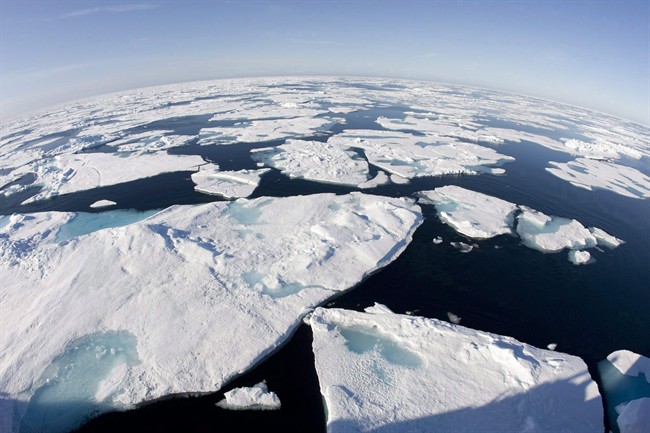A freezer malfunction at the University of Alberta has melted some of the world’s largest collection of Canadian Arctic ice core samples.

The university says about 12 per cent of the collection was damaged when temperature in the storage freezer soared to 40 C over the weekend. The ice samples were immediately moved to a working freezer on Sunday but the damage was already done.
Reality check: Clearing up misconceptions Canadians have about climate change
Andrew Sharman, vice-president of facilities and operations, said the freezer’s cooling system malfunctioned and the monitoring system also failed due to a computer glitch.
“The loss of any ice core sample is deeply concerning to the University of Alberta and to our research teams, who plan to use this ice to answer important questions about climate change and our planet’s history,” he said in a statement.
“With the assistance of our service provider, the affected freezer has been restored, an investigation is ongoing, and we are working to ensure this does not happen again.”
The ice core samples — little cylinders taken from the drilling down metres below the surface in the circumpolar regions — were painstakingly transported in January from the Geological Survey of Canada’s Ice Core Research Laboratory in Ottawa.
READ MORE: Canada in 2050: a land of climate-change extremes at current emissions levels
They represent more than 80,000 years of climate change and some of the samples date back to the last ice age. The collection includes 12 ice cores drilled in five different locations and represents the only ice cores in the world from the Canadian Arctic.
Glaciologist Martin Sharp says the loss is a major disappointment.
“When you lose part of an ice core, you lose part of the record of past climates, past environments — an archive of the history of our atmosphere,” he said in a release.
“You just don’t have easy access to information about those past time periods.”
READ MORE: Has the climate changed in your backyard? New Alberta website has the stats
Even though the incident did not completely destroy any of the cores, Sharp said the melted water from one sample can contaminate others nearby, making it virtually impossible to analyze. That will rule out some of the research planned, he said.
“But not all research we do involves analysis of entire cores,” Sharp said. “We may have to reconsider some of the work we planned to do, but the work can and will continue — and nearly 90 per cent of the archive is still intact.”
The university was granted permission to house the ice collection in 2014 and moved the samples across the country in a specially designed freezer truck. The cores were in a container chilled to -30 C which also had a built-in temperature monitoring system. The system was fitted with a GPS system that sent text messages every hour with the unit’s location and temperature.
The samples were moved into a walk-in freezer March 24.

Comments